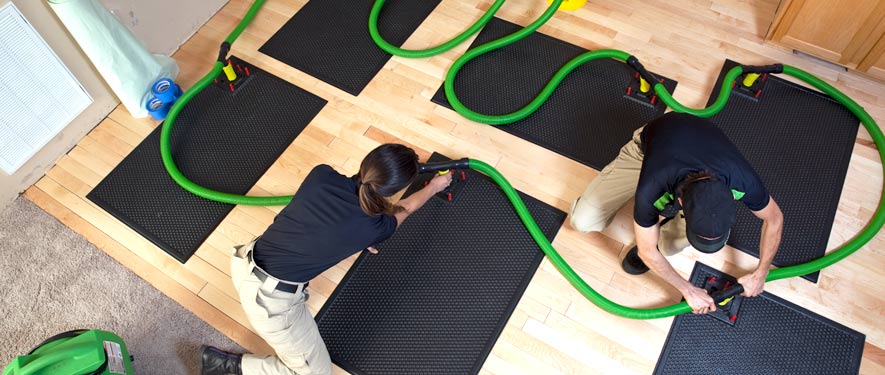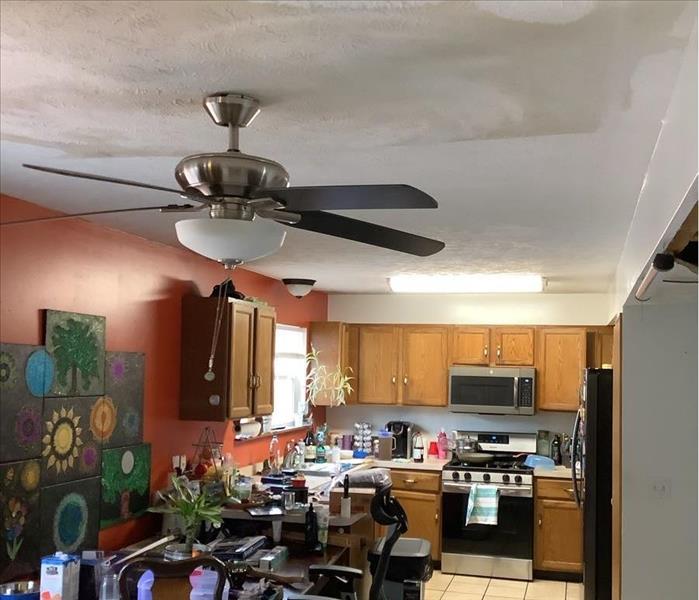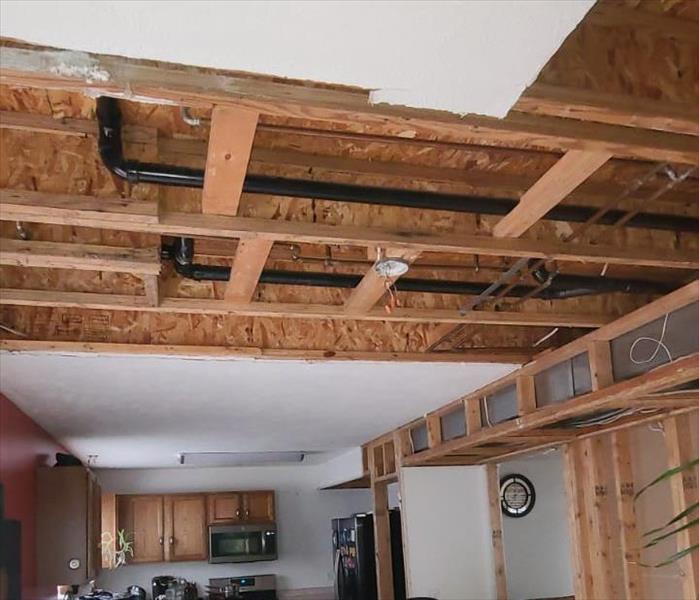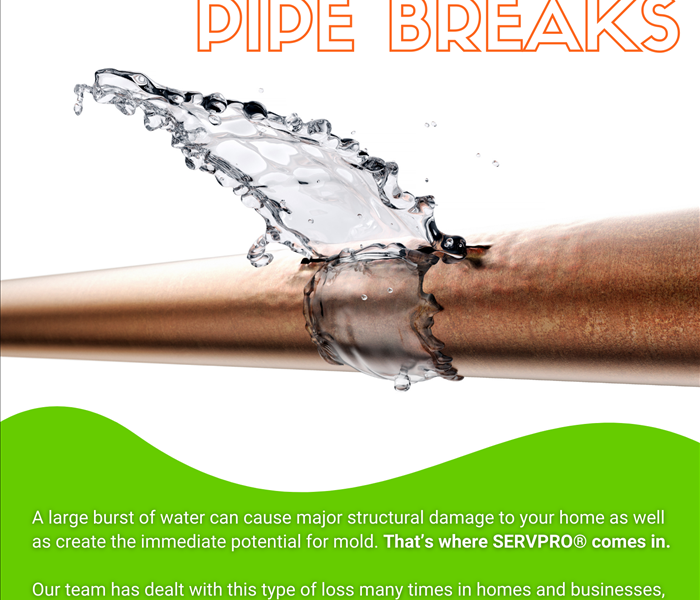
Step 4: Drying and Dehumidification
Our Water Damage Restoration Process
Once the excess water has been removed, the floors and walls may appear dry, but a quick inspection will reveal they are wet to the touch. Nearly all building materials, like wood, drywall, and flooring materials, are porous and therefore retain water. This retained water can cause the materials to break down, warp, or cause mold damage. Indeed most of the time these materials are wet to the touch immediately after your home or commercial property experiences water damage. However, if some time passes before you have a professional out to check your property, the walls may have dried on the outermost layer. This can be deceiving because it takes advanced technology to detect water beneath the surface. This is important for your New Philadelphia, Midvale, Uhrichsville, and surrounding areas home and commercial property because undetected water can cause mold growth and damage the structure of your building. SERVPRO of New Philadelphia is available 24 hours a day, 7 days a week for when you need help most. Don't hesitate to give us a call (330) 556-4656.
Drying / Dehumidification
Our Professionals will use room measurements, temperature, and relative humidity to determine the optimal number of air movers and dehumidifiers to dry your home or business. We’ll carefully monitor the progress using moisture meters until the materials return to acceptable drying goals.
- Use Dehumidification Equipment
- Use Monitoring Equipment to Track Progress
Monitor Floor and Walls
We check the moisture levels to monitor the drying process.
- Monitor Floors
- Monitor Walls
Drying Equipment
- Industrial-grade dehumidifiers help prevent secondary water damage like swelling and warping of floors, walls, and furniture.
- High-speed air movers create airflow across walls, carpets, pads, and furniture, which accelerates the evaporation of moisture.







 24/7 Emergency Service
24/7 Emergency Service





